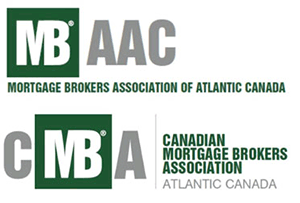
How to Renovate Your Home with Equity Instead of Debt
June 13, 2025 | Posted by: Keith Leighton

How to Renovate Your Home
With Equity Instead of Debt
As the weather warms up across Atlantic Canada, many homeowners start thinking about home improvement projects. Whether it’s upgrading a kitchen, replacing a roof, or finishing a basement, renovations can enhance both comfort and property value. But the big question always remains: How do you pay for it?
Instead of turning to high-interest loans or credit cards, many Canadians are using their home equity as a smarter, lower-cost financing solution.
What Is Home Equity?
Home equity is the difference between what your home is worth and what you still owe on your mortgage. For example, if your home is valued at $400,000 and you owe $250,000, your equity is $150,000. That equity is a powerful financial tool you can access to invest back into your home.
Why Use Equity Instead of Debt?
When you use traditional debt like personal loans or lines of credit, you often face higher interest rates and shorter repayment periods. That means more money out of pocket every month and more pressure on your finances.
Using home equity to renovate offers three big advantages:
1. Lower Interest Rates: Mortgage-based financing typically has much lower rates than personal loans or credit cards.
2. Larger Access to Funds: You may be able to access more funds than you would through a bank loan or credit card limit.
3. Flexible Repayment Options: You can stretch out the payments over a longer term, reducing monthly strain on your budget.
Three Ways to Access Your Equity
There are several financing tools available, depending on your needs and goals.
1. Refinance Your Mortgage
This involves breaking your current mortgage and replacing it with a new one that includes the additional renovation funds. It’s ideal if you’re close to your renewal date or if current rates are favourable.
2. Home Equity Line of Credit (HELOC)
A HELOC works like a credit card secured by your home. You borrow only what you need and pay interest only on the amount used. It’s flexible and good for ongoing or phased renovations.
3. Second Mortgage
A second mortgage allows you to keep your existing mortgage and take out a separate loan using your equity. This can be a good option if your current mortgage has a low rate you don’t want to lose.
Smart Renovation Tips
• Start with an Appraisal: Knowing your home’s current value helps determine how much equity is available.
• Set a Budget and Stick to It: Know how much you’ll spend before you borrow.
• Focus on High-Value Improvements: Kitchen and bathroom upgrades, new windows, and energy-efficient systems often yield the best return.
• Talk to a Mortgage Broker: We can help you compare options, avoid penalties, and structure your financing for long-term success.
Final Thoughts
Your home is one of your most valuable assets. Using its equity to fund renovations is often more affordable and less stressful than taking on high-interest debt. At Ideal Mortgage in Atlantic Canada, our brokers understand the local market and can help you unlock your equity the smart way.
If you're planning a summer renovation project and want to explore your equity options, get in touch today for personalized advice.
